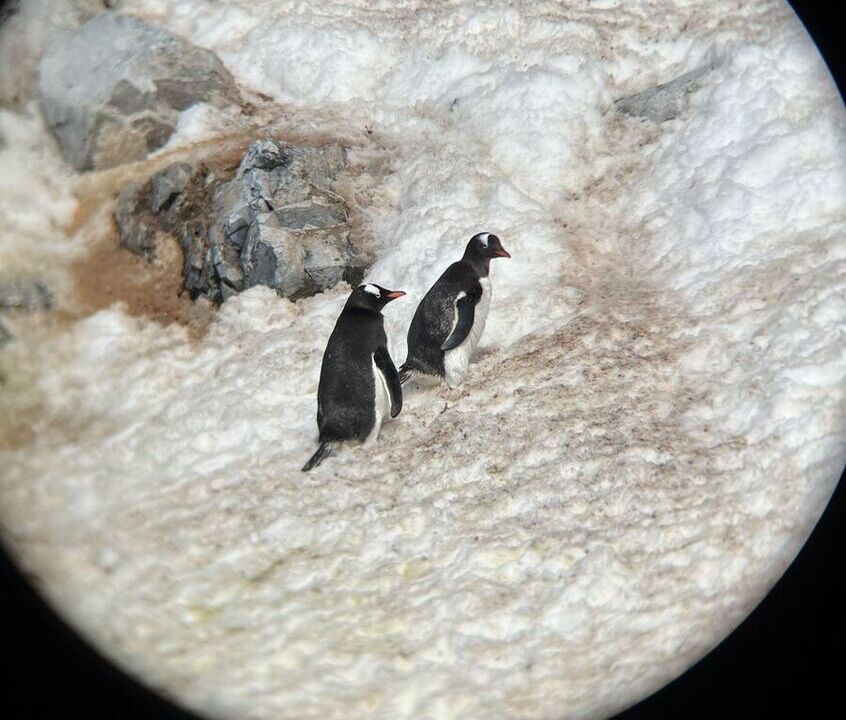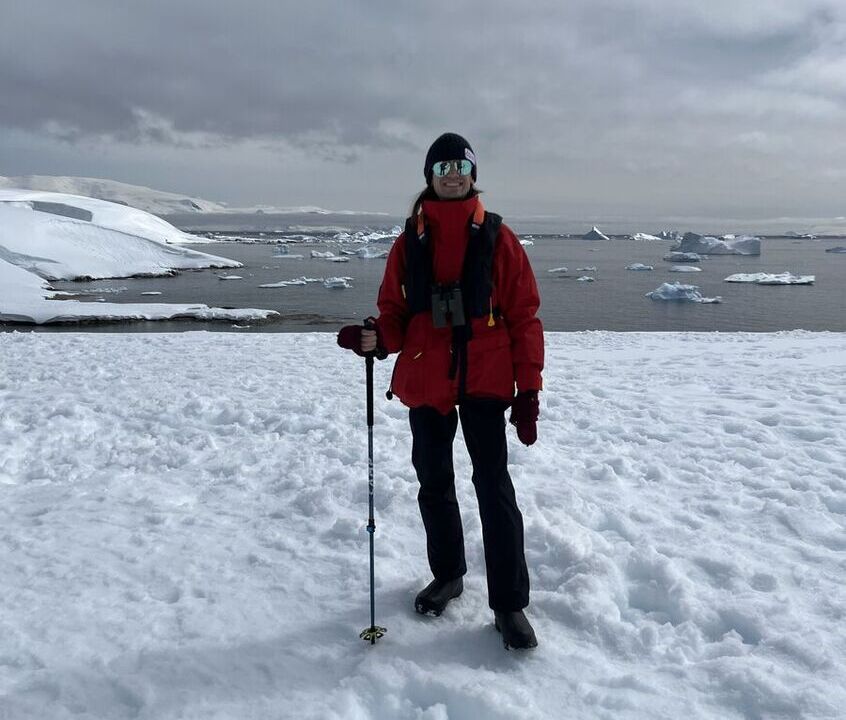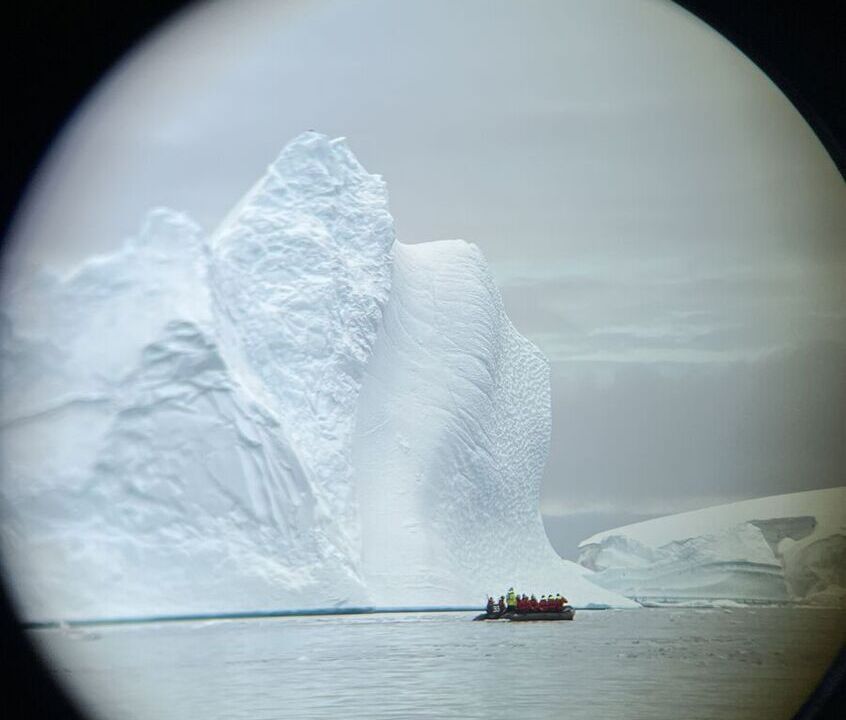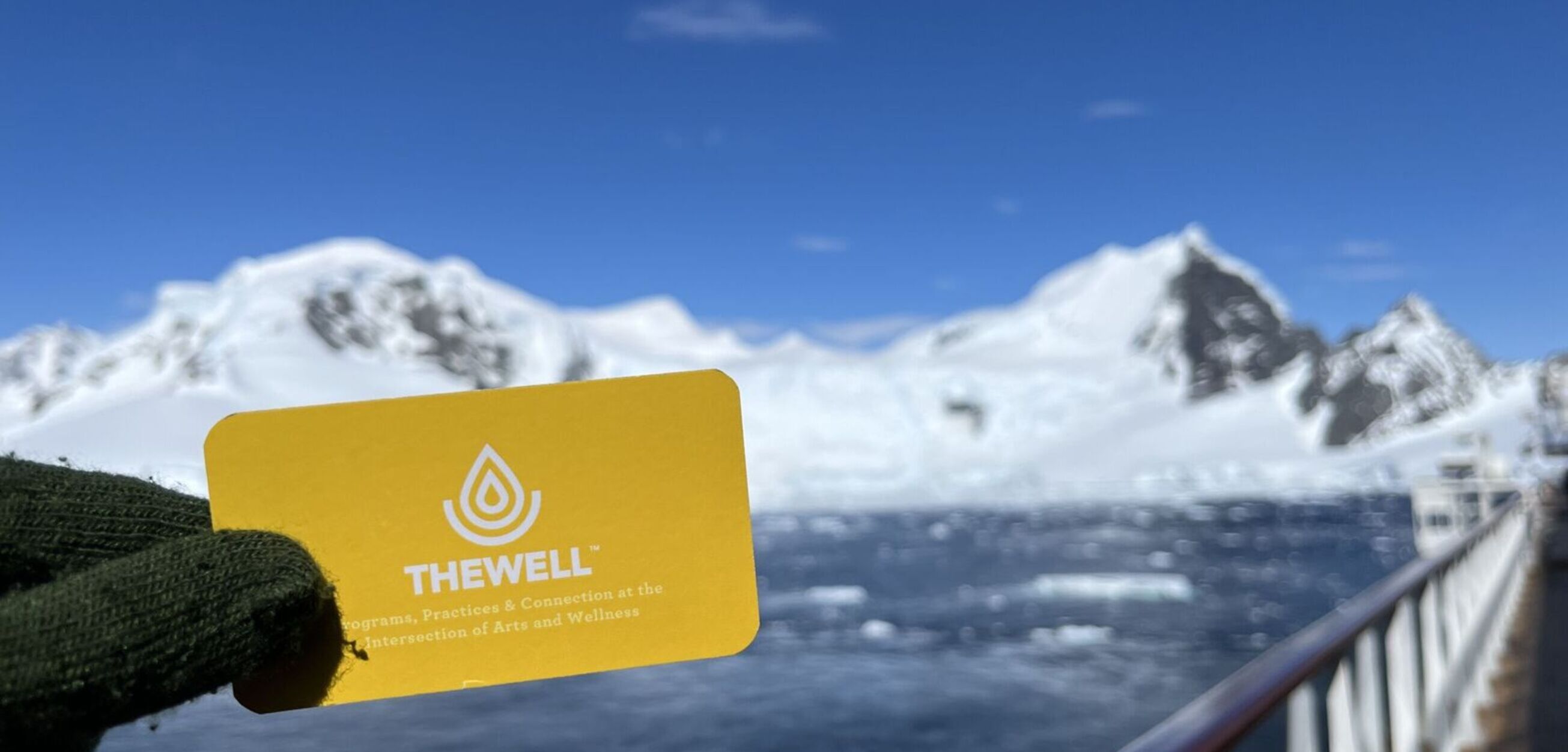Subscribe + Connect
Stay up to date on our latest mindfulness programs and access past newsletters.
Seeking Youth Fellows
Get paid to map safe spaces for youth, by youth in this new initiative from The Well.
Imagine an entire school – students, teachers, and administrators – taking time each morning to turn inward together, and listen to a brief mindfulness prompt and world-class music.
The Well's programs combine best practices in arts and wellness and are designed in partnership with those they serve.
Last November, I was lucky enough to find myself on a ship to Antarctica. Sailing across rough seas for two days, I finally arrived in a mesmerizing ocean of white–something straight out of National Geographic. It’s a place that many call “The Silent Continent,” being mostly devoid of humans and internationally protected from military or corporate development. It’s truly one of nature's last frontiers. Surrounding our ship were towering icebergs and a wall of icy mountains thousands of feet high encircling us on all sides. I eagerly ran to the ship’s stern to take a few pictures and bask in the silence of nature. But when I opened the door, I heard something I didn’t expect: sounds.
Several albatross birds flew overhead, whales surfaced to breathe, the wind howled around the bay, penguins squawked over their nests, and the massive icebergs and ice chunks creaked and groaned along the cerulean blue water. Among all these natural sounds were also the familiar human sounds of kitchen plates and silverware, people talking, musicians playing in the lounge, and the ship engine bellowing deep into the water. If only I could hear Antarctica without us being here, I thought. Then, I could experience true silence.
When I pause and think, when we seek silence, what do we really mean? What do we think silence will teach us?

Two gentoo penguins climbing an icy path. Photo © 2023 Bryce Kessler.

Bryce standing on Antarctica. Photo © 2023 Bryce Kessler.

An iceberg in Chiriguano Bay, Antarctica. Photo © 2023 Bryce Kessler.
As humans, one of the ways we orient, process, and understand our world is through sound: speech, noise, and music. Speech is the easiest to define, coming from vocal cords. But noise and music can be more subjective. Generally, “noise” is unpleasant, and “music” is enjoyable. Of course, many noises might be enjoyable (a baby crying vs. a baby laughing), and music has different genres that some may enjoy more than others (classical music vs. classic rock). But what really interests me is the intersection of these sounds, the true soundscape of our world that is a constant ebb and flow from speech to noise to music. In a world with so much sound 24/7, how can we possibly delineate between them? Why do some sounds help us feel more relaxed or alert than others?
Several scientific and musical studies show that music positively affects our brain function. But how? I’m not a scientist, but I am a musician. And as a musician, I know that the sound of music is made of vibrations. Imagine plucking a really tight clothesline and watching it bounce up and down. Or hitting a large church bell with a hammer and watching it quake. Those bouncing vibrations are the same physical actions that create musical tones when a violin pulls its bow across the strings, or a percussionist strikes a drum.
When those vibrational sound waves enter our brain from our ears, they speak to all different parts of our brain (see “Your Brain on Music” from the Univ. of Central Florida). When we listen to music, our entire brain is activated, and–if you like the music–we are calmly massaged by those vibrations, relaxing our blood pressure and heart rate and easing our stress hormones.
But my world isn’t filled with beautiful music 24/7. The soundscape of my life is also filled with emergency sirens, loud apartment neighbors, meowing stray cats, honking cars, garbage trucks, highway traffic, and noisy construction. Not exactly a relaxing symphony… or is it?
Many composers have brought the “noise” of civilization and nature into their music. Here are a few fun examples that get a little more “out there” as you go down the list:
1812 Overture by Tchaikovsky
(a classic example featuring several cannon blasts)
Water Concerto by Tan Dun
(featuring water splashes as the solo instrument)
Copenhagen Steam Railway Galop for Orchestra by Hans Christian Lumbye
(simulating a moving train)
Different Trains by Steve Reich
(simulating several trains and speaking voices in motion)
Helicopter String Quartet by Karlheinz Stockhausen
(of course, played while flying in a helicopter)
A Grand, Grand Overture by Malcolm Arnold
(featuring solos for vacuum cleaners and rifles)
Symphony No. 2 by Arvo Pärt
(featuring rubber ducks and other child toys)
Something to Hunt and Shiver Lung 2 by Ash Fure
(featuring more silence and sound than tonal melodies)
In a world filled with so much noise and stress caused by noise, it’s normal to seek silence as the opposite of this stressful feeling I’m experiencing. If the noise bothers me so much, silence must be the answer to feeling calm, right? Or someplace in nature that is devoid of any human sound? Maybe. But what I realized in Antarctica is that human noise is truly inescapable.
In reality, the whales, the birds, the boats, the people… these are the sounds of Antarctica. This is the sound–the symphony–of “silence.” What would Antarctica be without the cry of whales or the lapping of water? Without the earth-shaking rumble of a falling glacier or the splash of penguins diving into the water? Without the hum of boat motors right alongside an elephant seal’s groan? Without sound, our world would be empty. How would we know we are alive without hearing and feeling the vibrations of sound? The sounds of our world are what make it truly special. And what may seem like “noise” is really the proof, the reminder that we are breathing, moving, and living.
When I crave silence, I remember that even my loud neighbors at home, the emergency sirens, and the sounds of taking out the trash are harmonious reminders of being alive.
For more research on Polar Eco-Acoustics, I highly encourage you to follow the work of Simone Eringfeld, who was onboard the ship with us and is working on her PhD in Polar Studies at Cambridge. Connect with Simone here.

Photo © 2023 Bryce Kessler.
We'd Love to Hear from You
Many of our programs and practices started because someone reached out and expressed a need. What can we do to support you?
Contact UsStay up to date on our latest mindfulness programs and access past newsletters.
Our programs have been nourishing the community since 2005. In 2019, we became the non-profit, A Mindful Moment.
We are a small yet mighty team, dedicated to making a big difference with what we have. Your support means the world to us.